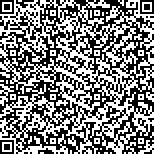| 引用本文: | 祁攀虎,屈银虎,成小乐,时晶晶,符寒光.锂离子电池负极墨水的制备及性能研究[J].材料科学与工艺,2019,27(3):16-22.DOI:10.11951/j.issn.1005-0299.20180155. |
| QI Panhu,QU Yinhu,CHENG Xiaole,SHI Jingjing,FU Hanguang.Research on the preparation and properties of anode ink for lithium ion batteries[J].Materials Science and Technology,2019,27(3):16-22.DOI:10.11951/j.issn.1005-0299.20180155. |
|
| 摘要: |
| 钛酸锂因零应变特性已成为性能优异的锂离子电池负极材料,在锂离子电极负极材料有良好的应用前景,确保后期3D打印出性能良好的微电池棒状电极.选取钛酸锂作为棒状电极的负极材料,与溶剂、增稠剂、分散剂和保湿剂等按一定比例制备打印墨水,随后通过以挤压为基础的3D打印技术打印电极,并在氮气保护下高温烧结获得的棒状电极。本文主要探究了钛酸锂掺杂石墨、钛酸锂质量分数以及烧结温度对棒状电极的性能影响,其次通过打印墨水的流变特性模拟分析来探究墨水黏度对挤压过程中流动速度的影响.结果表明:掺杂10%石墨的钛酸锂棒状电极相比未掺杂石墨的电极,其充放电容量提高了18%,表现出较好的循环性能;当钛酸锂质量分数为59%,打印墨水黏度为26.53 Pa·s,所制备棒状电极的电阻率为221 kΩ·cm,打印墨水具有良好的打印及导电性能;当烧结温度为950 ℃,棒状电极电阻率较小,为205 kΩ·cm,与基板有良好的附着力,膜层表面平整、致密且有许多孔洞,有助于电解液的渗透.对打印墨水的黏度进行模拟分析可知,随黏度的增减而使墨水流动速度变化明显. |
| 关键词: 钛酸锂 棒状电极 打印墨水 烧结温度 黏度 |
| DOI:10.11951/j.issn.1005-0299.20180155 |
| 分类号:TM504 |
| 文献标识码:A |
| 基金项目:陕西省科学技术研究发展计划-工业攻关资助项目(2013K09-33);西安市科技计划项目(CXY1517(3));西安市科技计划项目(2017074CG/RC03/XAGC002);西安市科技计划项目(2017074CG/RC03/XAGC007). |
|
| Research on the preparation and properties of anode ink for lithium ion batteries |
|
QI Panhu,QU Yinhu,CHENG Xiaole,SHI Jingjing,FU Hanguang
|
|
(School of Materials Science & Engineering, Xi′an Polytechnic University, Xi′an 710048, China)
|
| Abstract: |
| Li4Ti5O12 has become an excellent negative electrode material for lithium ion batteries due to its zero strain characteristics. It has a promising application prospect in lithium ion electrode anode materials, which can ensure good microbattery rod electrodes with great 3D printing performance. In this study, Li4Ti5O12 was selected as the negative electrode material of an electrode, and was mixed with a certain ratio of solvent, thickener, dispersant, and humectant to prepare a printing ink. The electrode was then printed by an extrusion-based 3D printing technology. The shape of the rod electrode was obtained by high-temperature sintering under nitrogen protection. This article mainly investigates the effects of Li4Ti5O12 doped graphite, Li4Ti5O12 solid content, and sintering temperature on the performance of rod electrodes. The effect of ink viscosity on the flow velocity in the extrusion process was studied by the rheological characteristics of the printing ink. Results show that the Li4Ti5O12 rod electrode doped with 10% graphite had an 18% increase in charge and discharge capacity compared with electrodes undoped by graphite, showing good cycle performance. When the solid content was 59%, the viscosity of the printing ink was 26.53 Pa·s, the resistivity of the prepared electrode was 221 kΩ·cm, and the printing ink had good printing and conducting performance. When the sintering temperature was 950 ℃, the rod electrode had a low resistivity of 205 kΩ·cm and good adhesion with the substrate. The surface of the rod electrode was smooth and dense with many holes, which contributed to the penetration of the electrolyte. A simulation analysis of the viscosity of the printing ink show that the ink flow rate changed significantly with the change of the viscosity. |
| Key words: Li4Ti5O12 rod electrode printing ink sintering temperature viscosity |






